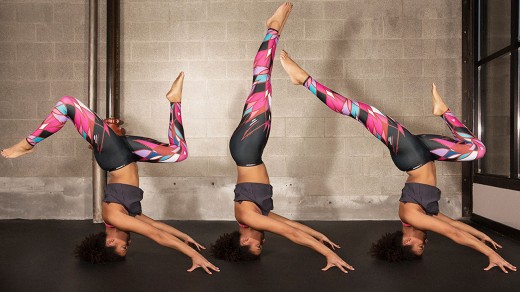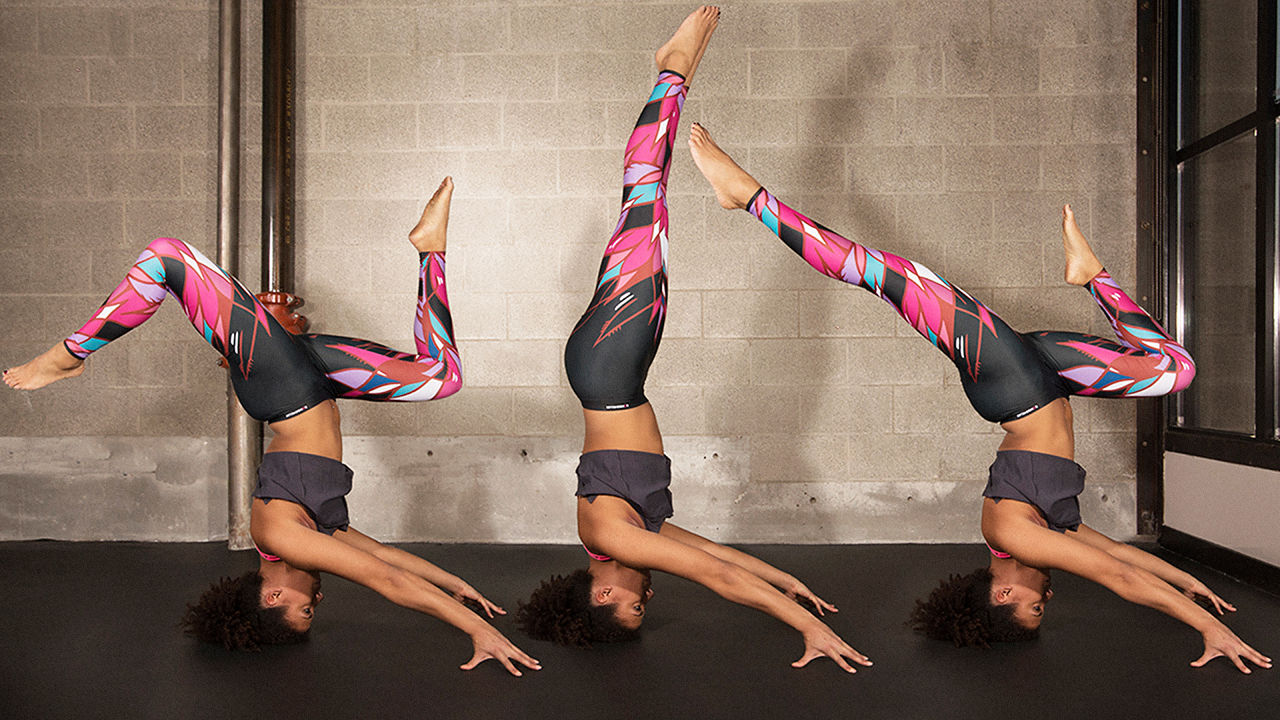The Design Technology Behind Bombsheller’s Badass Graphic Leggings
The Seattle-based company has automated almost everything that goes into making its leggings (well, except for the sewing).
If programmer-inventor Pablos Holman had it his way, he would transform his clothing factory into one big 3-D printing machine. After all, he has tons of experience with 3-D printing technology, having helped create the machines at MakerBot. But with the technology being what it is, Holman will have to hold out until 3-D printers can better handle fabric.

For now, Holman makes do with the high-quality fabric he imports from Italy for his company, Bombsheller, which he launched last summer with friends Marissa Monteiro and Nick Vu. The Seattle-based company makes performance-grade graphic leggings for men and women in real time, using custom software that controls an in-house dye-sublimation printer. Going from concept to product takes less than a day, with the help of local seamstresses.
Through software automation, on-demand production, and a one-month payment policy for independent designers, Bombsheller aims to make the traditionally long lead times in clothing manufacture a thing of the past, while taking advantage of advances in digital printing for fabrics. In the rest of the fashion world, designers solidify looks a year in advance, send them to Asia for mass production, and get paid 90 days after their products sell. “We’re trying to improve almost everything about the way clothes are made and bought and sold,” says Holman.
Bombsheller comes at a time when millennials increasingly demand more locally produced clothing and throw their support behind small retailers. Companies like American Giant are bringing clothing manufacturing back to the U.S., and the make-on-demand model, like Betabrand’s, is the antithesis to the apparel industry’s tradition of producing its stock en masse.

Any graphic artist—amateur or professional—can upload their own design to Bombsheller’s site and, after the company renders it onto a Lara Croft-like 3-D model in its digital catalog, can set their own price above a baseline of $69. Artists keep the rights to their designs and share revenue with Bombsheller: $69 goes to Bombsheller, and the rest goes to the artist.
After the markup, the leggings typically run for around $80 or $90, and the company pays the artist within a month for royalties that accumulate above $20, or continuously rolls the royalty payment forward until it surpasses that sum. Once a customer orders the artist’s leggings, the Bombsheller team prints the design out on the fabric, and a seamstress sews it to measure into finished leggings. The company ships the product to anywhere worldwide the following day.
“The bottleneck is the printer,” says Holman. The company runs the printer on its slowest setting to let the 40-gauge knit fabric optimally take up the ink. It only takes a minute to print out enough material for one pair of leggings, but in this world, where 3-D printing makes instant gratification increasingly more attainable, that’s one minute too long.
Bombsheller is Holman’s main gig outside of his day job at the Intellectual Ventures Laboratory, the experimental arm of the famous patent-purchasing company. “I’ve been there since we started it, and the work we do there is very important,” Holman says. He has no intention of leaving it. “Building Bombsheller is a way to make me a better inventor.” As a senior inventor under ex-Microsoft CTO Nathan Myhrvold—who has a similarly impressive sideline as one of the authors of the epic cookbook Modernist Cuisine, he has the flexibility to structure his time as he likes, devoting most of his non-lab hours to Bombsheller.
The Bombsheller team has developed a 3-D rendering tool that lets the artists visualize their work on the human body, and has created open-source software to help artists, no matter how unfamiliar they are with coding design patterns in the JavaScript language.
The online rendering tool is key to democratizing the design process for designers who don’t have the resources to see their designs on live models, says Monteiro, one of Bombsheller’s cofounders. As opposed to designing a 2-D logo on the front of a T-shirt, new designers can practice creating designs that wrap around the body in three dimensions.
An avid social dancer, Holman met Monteiro on the salsa circuit in Seattle in 2011. Monteiro, who is a professional dance instructor, used to regularly order graphic leggings from an Australian company. Her fellow dancers kept asking her where they could get some, and Holman, who has worked on several startups in Silicon Valley, knew this was a business opportunity. Now, Monteiro and Holman say, everyone on the Seattle dancing scene wears graphic leggings.
Holman has wholly financed Bombsheller’s operation thus far, from its rented building next to the Space Needle to paying its 20 part-time employees. Typically, the company will have one or two of its five seamstresses working and can fill up to 200 orders per day at maximum capacity.
“We still have human seamstresses,” Holman says, “But we’re loving it.”
Achieving mass scale isn’t on the cards for Bombsheller, which expects to break even this year. The company is purposely not seeking venture capital because it doesn’t want to be cornered into reaching the investors’ goals; it wants to keep management decisions within its team.
Embedded within Bombsheller’s logo is a graphic of a cartoon bomb, which hints at the impact the company wants to have on the fashion industry.
“We’re not going to be in Vogue. But if we can build a company that antagonizes the apparel industry, then we’ve done our job,” Holman says.
Fast Company , Read Full Story
(179)














